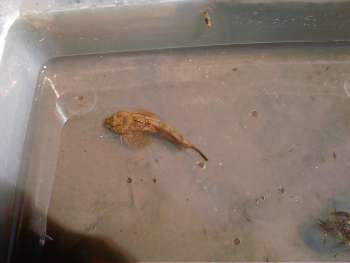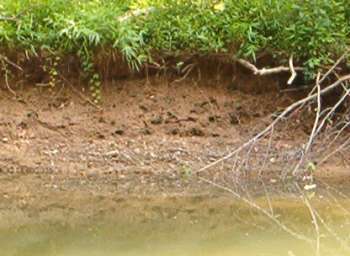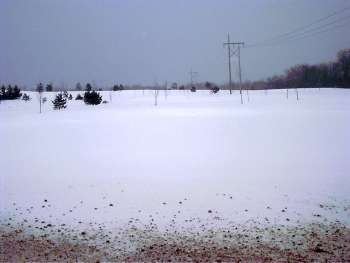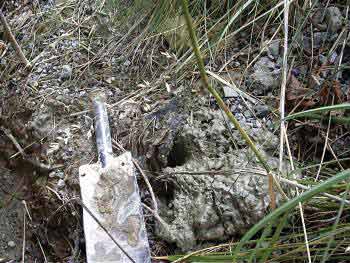
Streams

This is chittenango creek. It is where I first caught my first crayfish. As a young boy, I used to tip over rocks and grab them to sell them at a local bait dealer.

Pictured here is a typical rock that housed a crayfish. Note the crayfish entering it's home. This particular species is cambarus bartonii.

Photo courtesy Shawna
A stream variety crayfish from Tennessee.

Photo courtesy Shawna
This crayfish depends on camouflage to survive.

An interesting species of fish that cohabitates with the crayfish is a scaulpin.
Rivers

picture courtesy of Vera palmer
Pictured here is back creek in Berkeley county in West Virginia. Note the numerous holes in the bank. Species name undetermined.

picture courtesy of Vera Palmer
Here is a burrow of a crayfish from the Shenandoah river in Jefferson county in West Virginia. Species name also undetermined.
Ponds

This is not a picture of winter fun land. There is a pond under all that snow where My orconectes immunis are hibernating.

Now you can see the pond.

A burrow of a orconectes immunis found at the edge of the pond.
Rice paddys

photo courtesy of Richard Hotard, of www.cajuncrawfish.com
This is a rice paddy that acts as a double crop. After the rice is harvested, the crayfish eat the unused part of the plant for forage. Species name : Procambarus Clarkii

photo courtesy of Richard Hotard, of www.cajuncrawfish.com
Here is a boat used to check crayfish traps in a pond besides a rice paddy.

Photo courtesy of Richard Hotard, of www.cajuncrawfish.com
A fine mess of crawfish ready to be brought back to the shop where they will be sorted, then packed for shipping all around the world.

photo courtesy of Richard Hotard, of www.cajuncrawfish.com
This is a fine specimen of Procambarus clarkii, a close cousin of the Florida electric blue crayfish. It's bright red color makes them a great addition to any crayfish keeper.
land

An unlikely place to find a crayfish at first observation.

However, upon looking further burrows are present.

After a bit of digging, a prized cambarus monongalensis is in my hands.